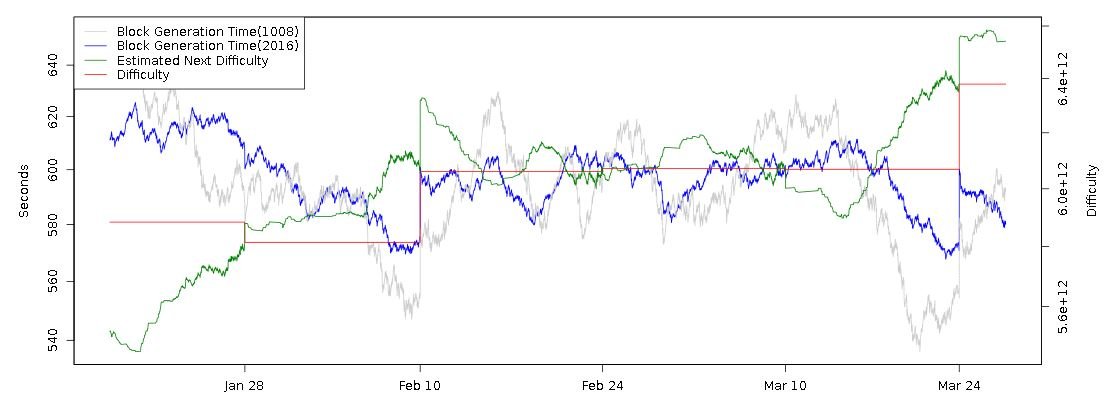Bitcoin Difficulty Explained
Bitcoin Difficulty Explained
Bitcoin, the pioneer of cryptocurrencies, operates on a decentralized network, offering financial sovereignty to its users. At the heart of this revolutionary digital currency lies a process known as mining, which plays a crucial role in securing the network and validating transactions. One integral aspect of Bitcoin mining that often raises eyebrows is the concept of “Bitcoin Difficulty.” In this article, we will unravel the complexities surrounding Bitcoin Difficulty, exploring its significance, calculation methods, historical changes, and its impact on miners and the broader cryptocurrency market.
What is Bitcoin Difficulty?
Bitcoin Difficulty can be likened to a puzzle that miners must solve to add new blocks to the blockchain. It is a metric designed to regulate the time it takes to mine a block. The higher the Difficulty, the more computational power is required to find the solution, resulting in a slower block creation process. This mechanism ensures that blocks are added at a relatively constant rate, approximately every 10 minutes.
Bitcoin Block Generation Time vs Difficulty

*Image was taken from bitcoinwisdom
How Bitcoin Difficulty is Calculated
The calculation of Bitcoin Difficulty involves a sophisticated algorithm that adjusts the difficulty level approximately every two weeks. This adjustment is based on the total computational power of the network, known as hash rate. If the network’s hash rate increases, the Difficulty also increases to maintain the 10-minute block generation target.
Significance of Bitcoin Difficulty
Bitcoin Difficulty serves a dual purpose. Firstly, it ensures a consistent block creation time, preventing rapid inflation or deflation of the cryptocurrency. Secondly, it plays a vital role in securing the network. As miners invest computational resources, the network becomes more robust against potential attacks.
Historical Changes in Bitcoin Difficulty
A fascinating aspect of Bitcoin Difficulty is its adaptability. Over the years, Bitcoin has experienced numerous adjustments, reflecting the ebb and flow of miners entering or exiting the network. Understanding these historical changes provides insights into the decentralized and self-regulating nature of Bitcoin.
Challenges Faced by Miners
While Bitcoin Difficulty maintains the integrity of the network, it presents challenges for miners. Rising Difficulty levels demand more powerful hardware and increased electricity consumption. Miners must constantly upgrade their equipment to stay competitive, leading to a dynamic and competitive landscape.
Impact on Bitcoin Mining Profitability
Bitcoin Difficulty directly influences mining profitability. As Difficulty rises, miners may find it more challenging to earn rewards that compensate for their operational costs. This delicate balance between Difficulty and profitability is a critical consideration for individuals and companies involved in mining activities.
The Future of Bitcoin Difficulty
Predicting the future of Bitcoin Difficulty involves analyzing various factors, including technological advancements, regulatory changes, and market trends. Miners and industry experts continually strategize to navigate potential challenges and seize opportunities presented by evolving Difficulty levels.
Strategies for Miners to Navigate Bitcoin Difficulty
Miners can employ several strategies to adapt to changing Difficulty. Embracing cutting-edge technologies, forming mining pools, and staying informed about market trends are essential practices for sustained success in the mining landscape.
Bitcoin Difficulty vs. Other Cryptocurrencies
While Bitcoin paved the way for cryptocurrencies, each digital asset has its unique characteristics. Comparing Bitcoin Difficulty with that of other cryptocurrencies sheds light on the distinct approaches taken by various blockchain networks to maintain security and efficiency.
Common Misconceptions about Bitcoin Difficulty
As with any complex topic, misconceptions abound. Addressing common myths and misunderstandings about Bitcoin Difficulty is crucial for fostering a clear understanding of how this metric operates and influences the broader cryptocurrency ecosystem.
Real-World Implications of Bitcoin Difficulty
Beyond the technical intricacies, changes in Bitcoin Difficulty have real-world implications. Investors and enthusiasts closely monitor these adjustments, as they often correlate with shifts in market sentiment and investment strategies.
Recent Developments
The cryptocurrency space is ever-evolving, and recent adjustments in Bitcoin Difficulty reflect ongoing changes in the industry. From regulatory developments to technological advancements, various factors contribute to the dynamic nature of Bitcoin Difficulty.
Expert Opinions
To gain a comprehensive perspective, it’s essential to consider the insights of industry experts and analysts. Their opinions provide valuable context for understanding the current state and potential future trajectory of Bitcoin Difficulty.
Conclusion
In conclusion, Bitcoin Difficulty stands as a fundamental aspect of the cryptocurrency’s infrastructure. Its dynamic nature, influenced by factors ranging from technological innovations to market forces, underscores the resilience and adaptability of the Bitcoin network. As miners navigate the challenges posed by changing Difficulty levels, the decentralized ethos of Bitcoin remains at the core of its enduring appeal.
FAQs About Bitcoin Difficulty
- Q: How often does Bitcoin Difficulty change?
- A: Bitcoin Difficulty adjusts approximately every two weeks to maintain a consistent block creation time.
- Q: Can changes in Bitcoin Difficulty affect the value of Bitcoin?
- A: While Difficulty adjustments don’t directly impact the value, they can influence miner behavior, which may indirectly affect market dynamics.
- Q: What happens if miners cannot solve the Difficulty puzzle?
- A: If miners cannot solve the puzzle, block creation time would extend beyond the target of 10 minutes, triggering a Difficulty adjustment to make mining easier.
- Q: How do miners cope with rising Difficulty levels?
- A: Miners often invest in more powerful hardware and join mining pools to collectively solve the increased Difficulty challenges.
- Q: Is Bitcoin Difficulty the same for all cryptocurrencies?
- A: No, each cryptocurrency has its unique Difficulty algorithm, tailored to its specific network requirements.




